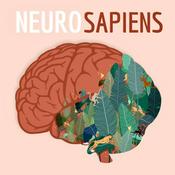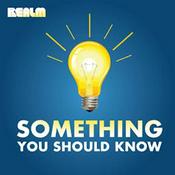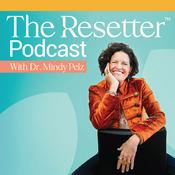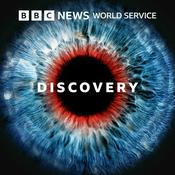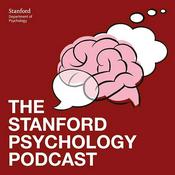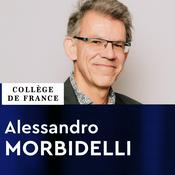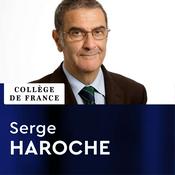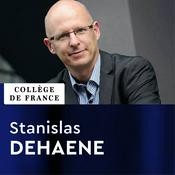45 épisodes

45. A Vision of Ubiquitous Connectivity
28/5/2025 | 1 h 7 min
“6G should be for the many, not the few” is the final sentence of a recent book by William Webb. In this episode, Erik G. Larsson and Emil Björnson use this book as the starting point for a conversation on why and how wireless technology can improve its coverage. The end goal is to deliver ubiquitous connectivity, so we can use any wirelessly connected application anywhere at any time. The discussion starts at the conceptual level: Why do cellular networks have generations? How are visions for future generations created, and can they be trusted? Different ways to enhance future networks are then covered, from making optimal use of existing network resources to adding different kinds of new infrastructure where it is most needed. The episode was inspired by the book “The 6G Manifesto”, ISBN 9798338481936. Music: On the Verge by Joseph McDade. Visit Erik’s website https://liu.se/en/employee/erila39 and Emil’s website https://ebjornson.com/

44. Rethinking Wireless Repeaters
22/4/2025 | 58 min
Coverage holes exist in cellular networks despite decades of wireless technology evolution, but new potential solutions are on the horizon. In this episode, Emil Björnson and Erik G. Larsson discuss network-controlled repeaters, reconfigurable intelligent surfaces, and half-duplex relays. Network-controlled repeaters have attracted particular attention from 3GPP in recent years; the conversation focuses on how these can create strong propagation paths through signal amplification. Implementation challenges related to synchronization, band selectivity, and stability are also covered. A detailed overview is provided in “Achieving Distributed MIMO Performance with Repeater-Assisted Cellular Massive MIMO” (https://arxiv.org/abs/2406.00142). Technical details can be found in: https://arxiv.org/pdf/2405.01074 and https://arxiv.org/pdf/2403.17908 Music: On the Verge by Joseph McDade. Visit Erik’s website https://liu.se/en/employee/erila39 and Emil’s website https://ebjornson.com/

43. Ten Things That Are Missing in Many Textbooks
13/3/2025 | 1 h 11 min
There are many textbooks to choose between when learning the basics of wireless communications. In this episode, Erik G. Larsson and Emil Björnson discuss the recent book “Introduction to Multiple Antenna Communications and Reconfigurable Surfaces” that Emil has written together with Özlem Tugfe Demir. The conversation focuses on ten subtopics that are covered by the book and differentiates it from many previous textbooks. These are related to the dimensionality of physical constants, the choice of performance metrics, and the motivation behind OFDM signaling. Various system modeling characteristics are discussed, including how the antenna array geometry impacts the channel, dual-polarized signals, carrier frequency dependencies, and the connection between models for small-scale fading and radar cross-sections. The role of non-orthogonal multiple access, hybrid beamforming, and reconfigurable intelligent surfaces are also covered. The textbook is meant for teaching an introductory course on the topic and can be freely downloaded from https://www.nowpublishers.com/NowOpen Music: On the Verge by Joseph McDade. Visit Erik’s website https://liu.se/en/employee/erila39 and Emil’s website https://ebjornson.com/

42. The Contours of 6G are Taking Shape
13/2/2025 | 1 h 6 min
Even if the 6G standardization is just beginning, the last five years of intensive research have illuminated the contours of the next-generation technology. In this episode, Emil Björnson and Erik G. Larsson discuss the recent paper “6G takes shape” written by leading researchers at UT Austin and Qualcomm. The conversation covers lessons learned from 5G, the potential role of new frequency bands and waveforms, and new coding schemes and forms of MIMO. The roles of machine learning and generative AI, as well as satellite integration and Open RAN, are also discussed. The original paper by Jeffrey G. Andrews, Todd E. Humphreys, and Tingfang Ji will appear in the IEEE BITS magazine, and the preprint is openly available: https://arxiv.org/abs/2411.18435 Music: On the Verge by Joseph McDade. Visit Erik’s website https://liu.se/en/employee/erila39 and Emil’s website https://ebjornson.com/

41. 6G in the Upper Mid-Band
07/1/2025 | 56 min
New cellular network deployments are often associated with new frequency bands. 6G will likely use the upper mid-band from 7-24 GHz. It is called the “golden band” since it provides more spectrum than in current 5G networks and features decent propagation conditions. In this episode, Erik G. Larsson and Emil Björnson discuss the coexistence issues that must be overcome when operating in this band and how much spectrum we can expect to utilize. The future role of multi-antenna technology and its associated challenges are detailed, including the emerging “Gigantic MIMO” term. The prospects of exploiting near-field propagation effects in 6G and the road towards distributed cell-free MIMO are also covered. You can read Emil’s paper about Gigantic MIMO here: https://arxiv.org/pdf/2407.05630 Nokia has a white paper about coverage evaluation: https://onestore.nokia.com/asset/213702 Music: On the Verge by Joseph McDade. Visit Erik’s website https://liu.se/en/employee/erila39 and Emil’s website https://ebjornson.com/
Plus de podcasts Sciences
Podcasts tendance de Sciences
À propos de Wireless Future
Écoutez Wireless Future, Mystères et étoiles ou d'autres podcasts du monde entier - avec l'app de radio.fr

Obtenez l’app radio.fr gratuite
- Ajout de radios et podcasts en favoris
- Diffusion via Wi-Fi ou Bluetooth
- Carplay & Android Auto compatibles
- Et encore plus de fonctionnalités
Obtenez l’app radio.fr gratuite
- Ajout de radios et podcasts en favoris
- Diffusion via Wi-Fi ou Bluetooth
- Carplay & Android Auto compatibles
- Et encore plus de fonctionnalités


Wireless Future
Téléchargez l’app,
Écoutez.




